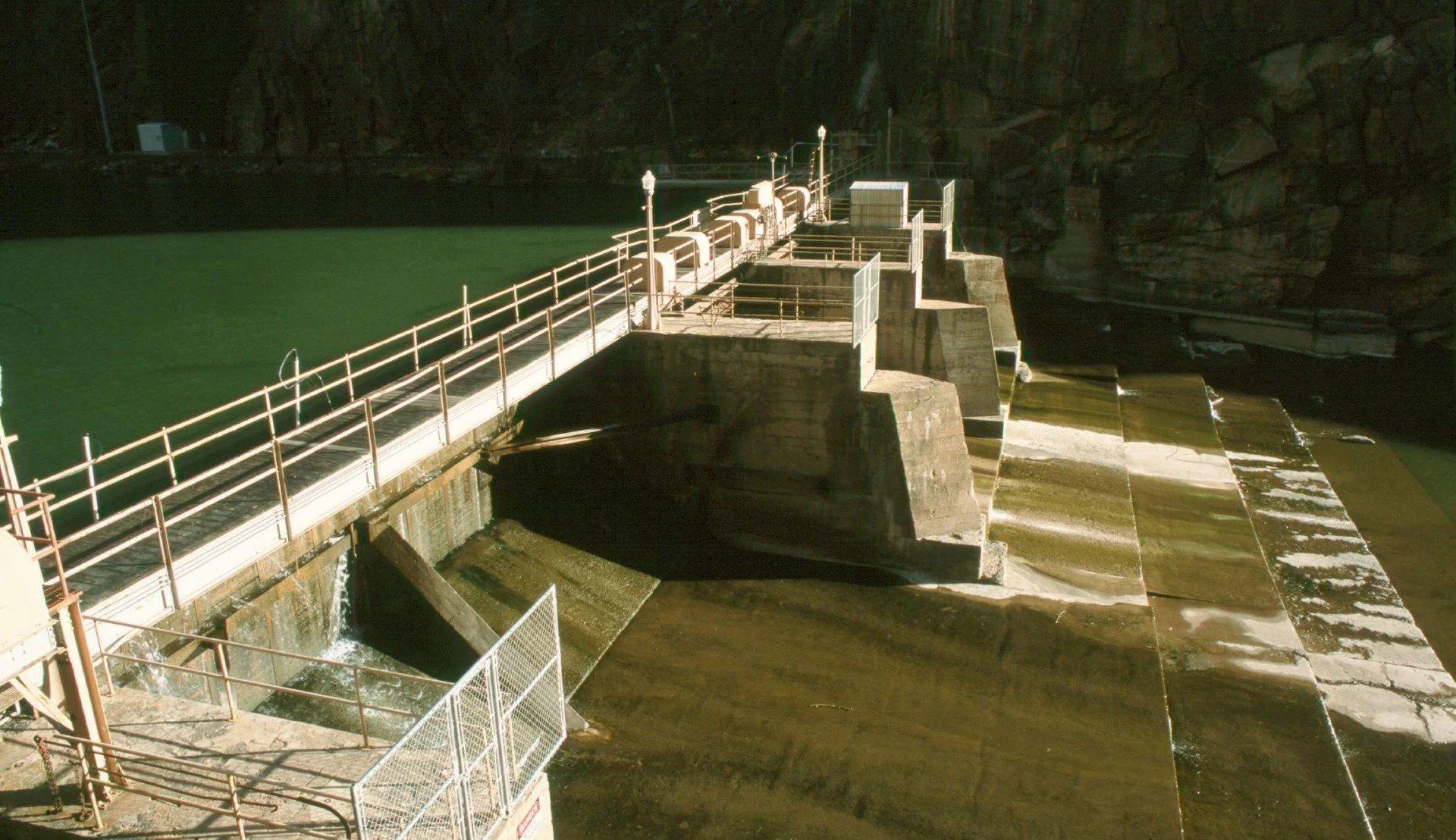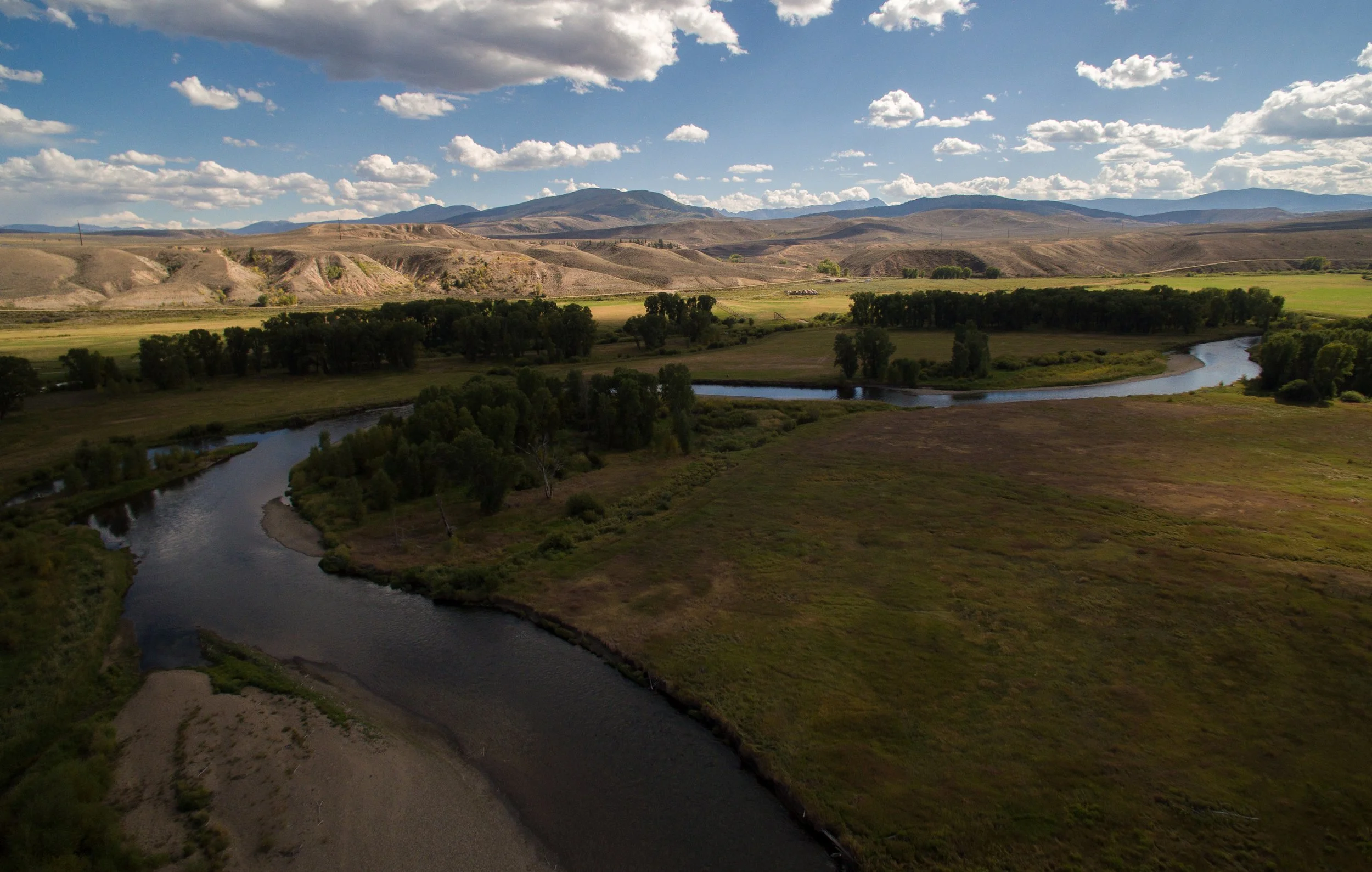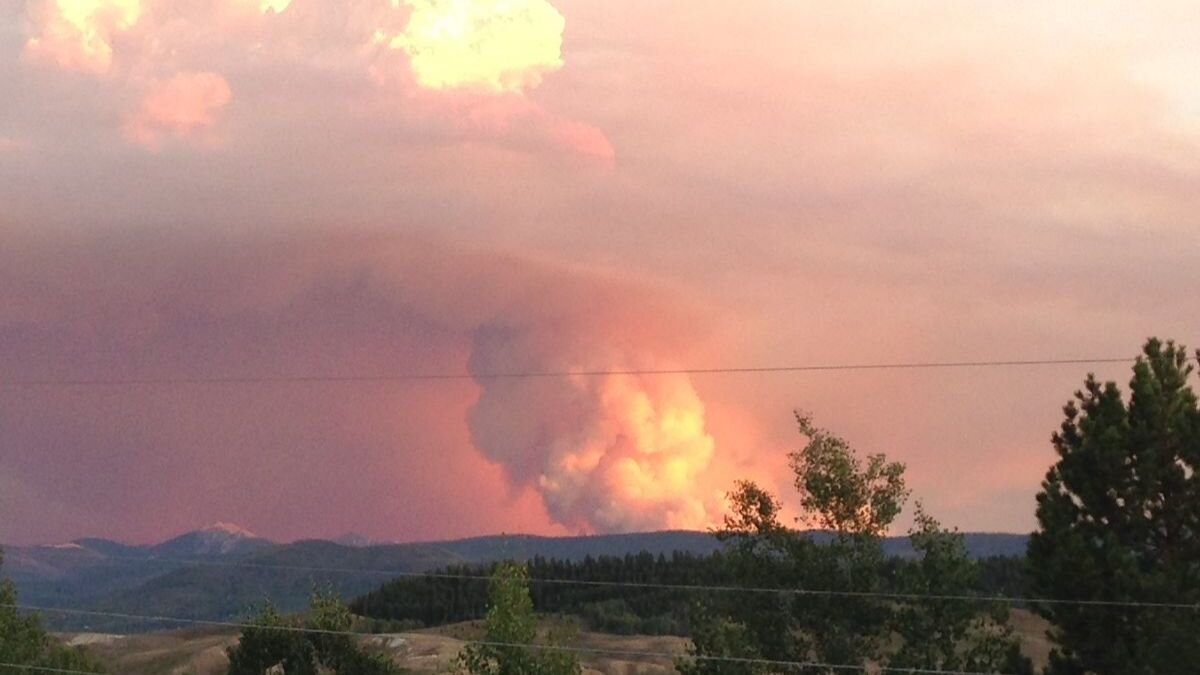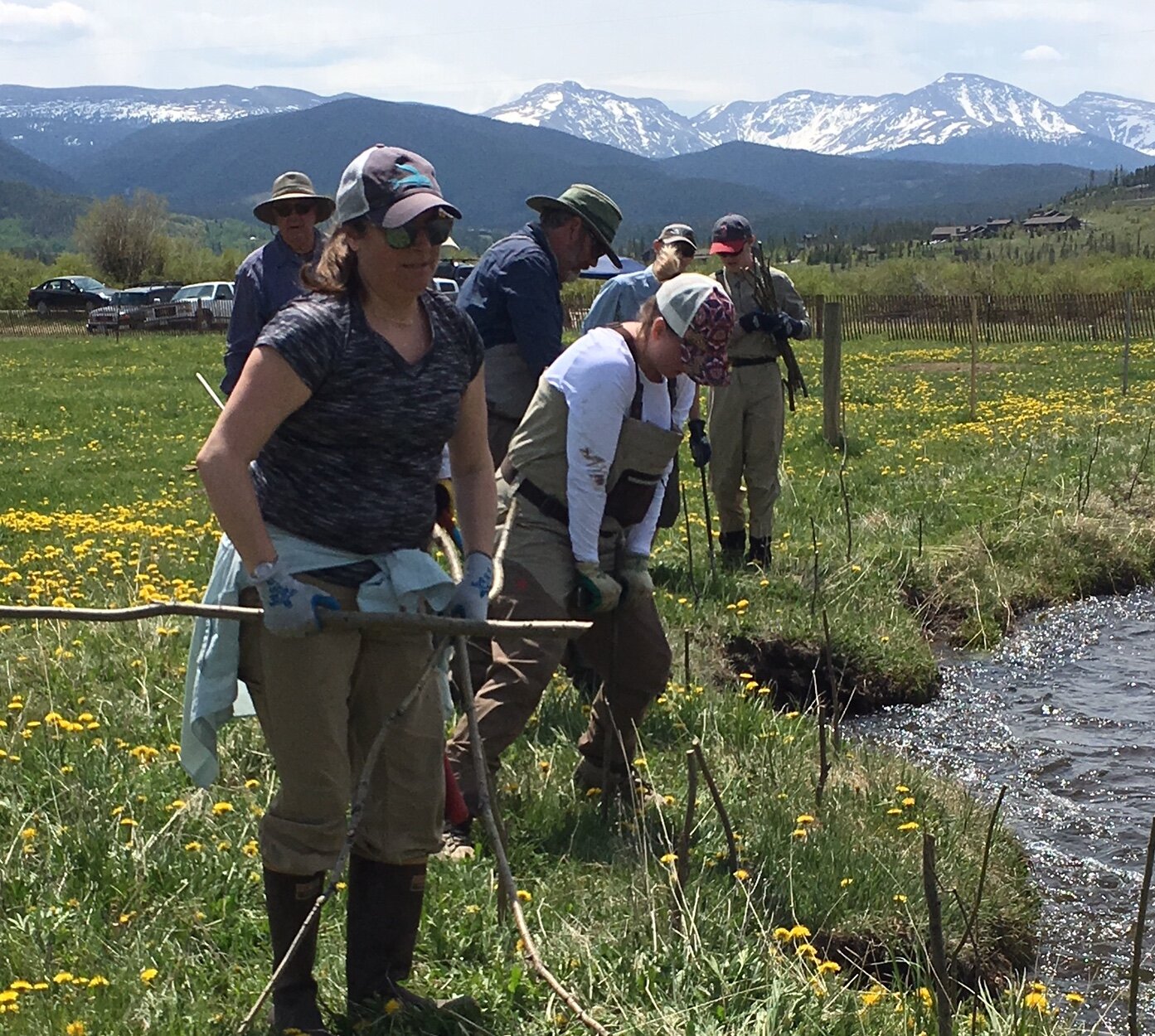Update comes from https://www.grandcountylearningbydoing.org/ ‘s newsletter:
Learning By Doing is a collaborative effort dedicated to maintaining and, where possible, improving the aquatic environment in Grand County.
2020 Water Operations
The Williams Fork fire as seen from Granby.
This year marked the sixth consecutive year of weekly water operations calls from May through September with Learning By Doing partners representing 12 different agencies and organizations. The group makes recommendations on reservoir and water diversion system operation in response to low flows and/or high stream temperatures, or to ensure streams within Grand County receive sufficient “flushing flows.” Flushing flows are needed to move sediment and clean fish spawning beds so as to preserve good aquatic habitat.
The 2020 water season started with above-average snowpack in the Upper Colorado River Basin, which allowed reservoirs that rely on water from the basin to fill or nearly fill. However, long periods of below average precipitation, coupled with above average air temperatures extending through the month of August, along with water diversions, reduced streamflow levels during the summer.
During spring runoff, Learning By Doing asked Denver Water to operate its water system so as to direct flushing flows to the mainstem of the Fraser River. Flushing flows on all Fraser River tributaries have been met in recent years and the Fraser River mainstem experiences impacts from increased development, diversions, and other stressors.
Throughout the hot, dry period in August, good water management along with cool nighttime temperatures helped keep Grand County stream temperatures from exceeding either the chronic (weekly maximum) or acute (daily maximum) state standards for aquatic life, with one exception: an acute stream temperature exceedance in St. Louis Creek on July 21.
Other beneficial operational adjustments in 2020 included:
Denver Water bypassed diversions at Ranch Creek that kept water temperatures within acceptable limits
Environmental water released from Granby Reservoir helped water temperatures downstream of Windy Gap Reservoir
A large, human-caused wildfire broke out in the Williams Fork River Basin above Williams Fork Reservoir in mid-August and burned approximately 19 square miles on U.S. Forest Service land into September. The basin is part of Denver Water’s catchment area. While the fire didn’t impact water operations, future issues with sediment buildup may become a factor.
Aquatic Habitat Monitoring: Spotlight on Stream Temperatures
Three temperature sites in the Colorado River that Learning By Doing reviews weekly.
Learning By Doing partners carry out an extensive annual monitoring program to evaluate the aquatic environment in Grand County. Monitoring includes stream temperature monitoring, evaluation of sediment transport and accumulation in fish spawning beds, macroinvertebrate (i.e., bug) monitoring, and fish surveys. This issue of the Learning By Doing eNews spotlights our ongoing stream temperature monitoring program.
In 2020, Learning By Doing and partners once again committed significant time and resources to gather stream temperature data at over 60 sites throughout Grand County. Temperature data are recorded in 15-minute intervals, 24 hours a day, 7 days a week. These data are used to assess compliance with Colorado’s stream temperature standards. Data from key locations are reviewed weekly throughout the summer months to support timely and informed decisions about where to request releases of environmental water. Learning By Doing reviews and reports on results for over 60 stream temperature sites in Grand County annually.
This year, Learning By Doing added two new monitoring sites on Ranch Creek to assess the results of willow planting efforts undertaken in 2018 and 2019 by Learning By Doing and Trout Unlimited’s Colorado River Headwaters Chapter. Plantings of more than 3,000 willow stakes are expected to help shade Ranch Creek through an open, flat meadow section with no vegetation along its banks. Ranch Creek is prone to elevated temperatures that are unhealthy for fish.
Teams of volunteers planted willow stakes along a 1-mile stretch of Ranch Creek to provide a shaded canopy.
Project on Cabin Creek Delayed Because of COVID
Learning By Doing will replace the old culvert on Cabin Creek with an aquatic organism passage (AOP) culvert in 2021.
The COVID-19 pandemic postponed Learning By Doing’s plans to install an aquatic organism passage (AOP) where Cabin Creek crosses under Forest Road 128 northeast of the Town of Fraser. The existing culvert is a barrier to fish migration. This project, in the works since 2018, will provide an additional 3.6 miles of passage for Colorado River Cutthroat Trout. Learning By Doing now plans to carry out construction during low flows in the fall of 2021.
Learning By Doing Partner Profile
Colorado Parks & Wildlife Aquatic Biologist Jon Ewert
When it comes to understanding fisheries, Colorado Parks and Wildlife Aquatic Biologist Jon Ewert is the expert Learning By Doing partners turn to again and again. Based out of Hot Sulphur Springs and serving Grand and Summit counties, Jon knows every river, lake and reservoir in the region as he keeps watch over fish and their habitat.
Jon is instrumental in helping Learning By Doing determine where river and habitat restoration efforts are most needed. He performs onsite studies that measure aquatic health and works with contractors to ensure projects go according to plan.
Each year, Jon leads teams of volunteers in “electrofishing surveys,” in which fish are temporarily stunned by an electric current, captured, counted and released in several sections of the Fraser and Colorado Rivers to provide a snapshot of the fish populations. This year, Jon had to turn away volunteers wanting to take part in the project, as word has spread to anglers and river lovers alike about the appeal of spending a day on one of Jon’s teams.
This year, his electrofishing activities on the Colorado River will include an additional component — tagging fish to monitor their movement via solar-powered antenna. This is part of a CPW research study to determine fish passage in the soon-to-be-constructed connectivity channel, reconnecting the Colorado River around Windy Gap Reservoir.













